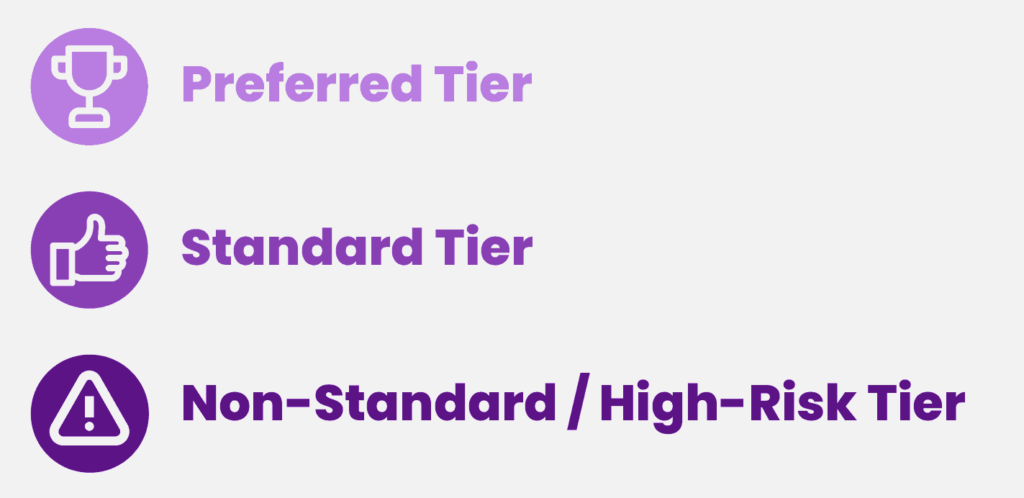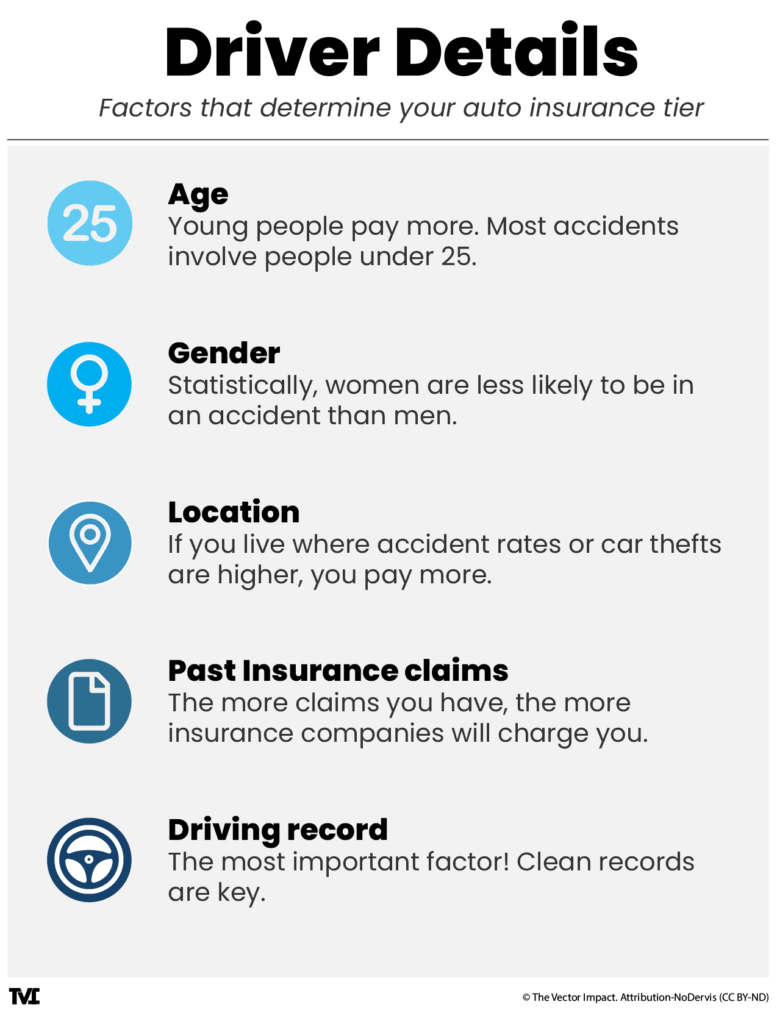Table of Contents
Auto insurance is ubiquitous. The car insurance market keeps expanding, and millions of policies are sold every month. As long as people drive cars, the car insurance industry is here to stay. But its growth has led to a lot of complexities.
Car insurance rates are not the same for everyone, which can be confusing to people who are unaware of how the insurance industry works. Some people might be charged less for the same policies than others.
The prices of different car insurance policies are decided by considering hundreds of big and small factors, along with other internal processes. After this calculation, a tier is assigned to individuals.
So, how exactly is car insurance calculated? We’ll break it down and also include ways you can save money on auto insurance policies.
What are car insurance rating tiers?
The car insurance tier system places drivers in different tiers based on their level of risk. If you’re familiar with the credit score system, the auto insurance tier system works in a similar way.
Here’s what you need to know:
- It is Score-Based
- To put drivers into different tiers, there is a range of scores that are used for the sorting process
- The score ranges from 200 to 997
- The standard rule of scoring applies here—higher scores are better
- A low score means the driver is a high-risk individual, while a higher score means the risk of a car insurance claim is low
People who have a score higher than 800 are considered low-risk drivers and get lower rates of car insurance. People with scores lower than 550/600 are considered high-risk individuals and they are charged more for the same car insurance policies.
The median score in the country is around 770, which means that most people are given a price quote for auto insurance that’s not too low or high. But let’s take a more detailed look.
The three tiers

Based on the range of scores, there are three tiers that all the drivers are sorted into. These three tiers are:
- Preferred Tier
- Standard Tier
- Non-Standard/High-Risk Tier
Preferred tier
As the name suggests, this tier is for every driver who wants to get great car insurance rates and save money on auto insurance policies. Drivers with excellent scores get in the preferred tier. Here are the requirements to qualify for this tier:
- A clean driving record with no accidents
- Excellent credit score (except in a few states where credit score is not a factor)
- No coverage gaps
- Low or no past insurance claims
- Above 25 years old (because people younger than 25 are considered high-risk individuals by some car insurance companies)
Standard tier
The standard tier is considered “average,” as most of the drivers in America are in this tier. This includes people with a median score of 770 (or close to 770) and insurance rates are right in the middle—not too high or low.
To be in this tier, the driver must have:
- A decent driving record with few tickets or points on their driver’s license
- An average credit score
- Few past insurance claims
- No coverage gaps
In this tier, age is not a factor which means people younger than 25 can be included.
Non-standard/High-risk tier
You guessed it—this is the tier to avoid. Unless you want to pay more for the same car insurance coverage. If you’ve been rejected from the other two tiers, your score is low and you’ll be automatically placed in this one.
The drivers in this tier have:
- Accidents, traffic violations, and DUI charges on their driving record
- A poor credit score
- Coverage gaps
- A lot of insurance claims
Drivers in this tier are charged the most, sometimes even 200% more than the average rate! 😱 If you don’t have a great driving record, be very careful while purchasing auto insurance policies.
Make sure that you get quotes from multiple insurance companies and compare all of them to find the best option available. Be specific with your searches. For example, if you live in Nevada, search for cheap car insurance in Nevada and choose the company that offers the most affordable rates.
What other factors affect these auto insurance tiers?
Car insurance companies focus on two other important driver details—in addition to age, past claims, and driving record—that help them analyze the risk for a particular driver getting into an accident and making a claim.
1. Gender
Statistically, women are less likely to be in a car accident than men; because of this, they’re considered low-risk drivers.
2. Location
People living in areas with a higher rate of accidents, car thefts, etc., pay more.

How you can move up into a higher tier
The saying “prevention is better than a cure” would be perfect in this case as it’s very difficult to climb back up once you’re in a lower tier.
First, your driving record is the most important factor. Car insurance companies look at your record from the past three to five years. So, if you’ve had some accidents or serious traffic violations, you’ll have to wait at least three years for it to dissolve from your record.
Improving your credit score could also help to improve your insurance tier—in states where credit score is a factor. Avoid coverage gaps by paying the premiums on time.
Another important thing you can do is limit or avoid insurance claims if the damage is not severe or if the cost of repairs is not too high.
When it comes to car insurance tiers, focus on what you can control
Save money on your car insurance by requesting multiple quotes and focusing on the factors that you can influence. Prioritizing your driving record and credit score in your twenties will only benefit your future self.


